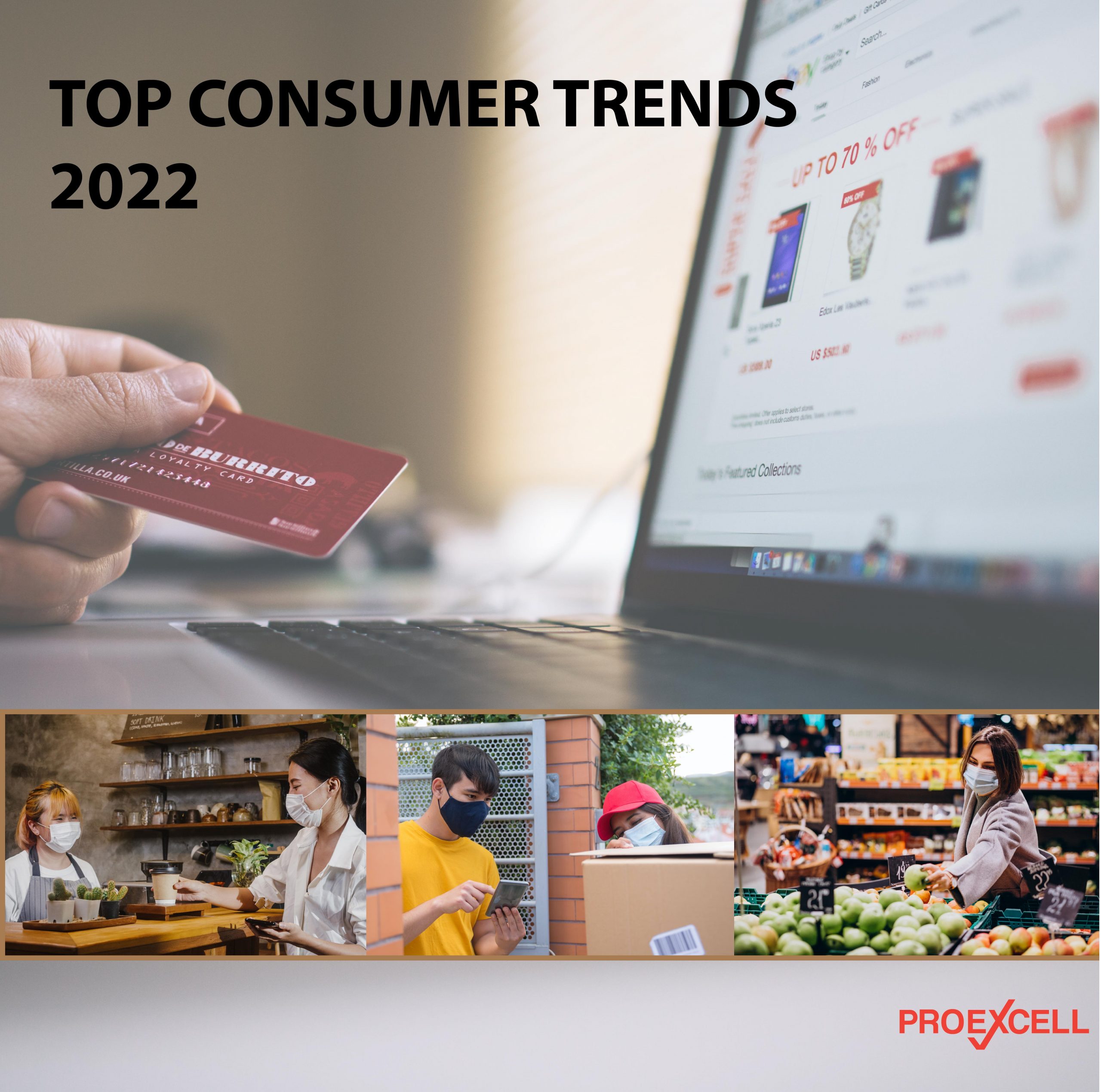Though global vaccination rates continue to increase in the fight against the COVID-19 pandemic, it continues creating uncertainty everywhere and a huge change towards consumer behaviour and approach in life. This uncertainty has caused reassessment of consumer priorities towards personal safety, dealing with illness, job loss, supply chain disruptions and their impact on product and service availability.
We have collated and studied the consumer trends 2022 reports from various sources. Here is the summary of the top consumer trends for your easy reference.
Top 5 Consumer Trends in 2022
- Consumer buying decision is more about “When They Need It” for every purchase they make instead of choosing whether to buy products online or in stores. Shopping patterns change to center around times of need versus specific retail stores or formats.
- Consumers refocus on sustainability in their buying cycle, but they wrestle with tough trade-offs, especially when difficult questions only have unclear answers. For example, is it more sustainable to rent clothing or buy clothes and then recycle them? Which has a smaller carbon footprint: an electric car or a hybrid?
- The pandemic-driven customer-centric approach where the customer prefers to have contactless payments, pickup and delivery services, virtual medicine, and demand for safe venues such as open-air dinning structures, etc. Consumers wrestle with big life decisions on top of everything else.
- Greater self-awareness drives new behaviours. The global pandemic forced consumers to reconfigure their lives, changing living situations, and testing their mental resilience amid health risks, economic hardship, and isolation. Now they are reassessing their life priorities, identities, and work-life balance (to think differently about their careers, family dynamics, etc.)
- Shopping is an always-on experience and in a passive manner. In the old world, shopping was more purposeful where consumers made lists and went to physical stores for specific items. But now, consumers shop while they scroll Facebook, Instagram or online marketplaces (such as Lazada, Shopee, eBay, etc.); they shop while reading the news online; and they shop while in video calls or online meetings. In addition, consumers are less tolerant of bad experiences and can easily find another source if they can’t get what they want from one business or it fails to meet their expectations.
What Businesses Should Do?
Businesses can rethink a more tactical plan and approaches to address the challenges and move forward in a different way to attract and retain customers, and to remain agile in the “new-norm” world:
- Priorities customers’ needs. Businesses need to put the customers’ needs for convenience, safety, and general well-being first in order to continue attracting consumers and retain their existing customers.
- Customer- and environment-centric approach by promoting sustainable and eco-friendly practices that prioritize community values.
- Digitalization and cybersecurity are key to drive the “customer centricity”. Businesses should adapt to the changes in the digital realm to remain relevant, visible and popular in the targeted markets.
- Marketing and media preferences are changing. Businesses need to build a solid base of quality content across all marketing channels. A different marketing approaches and message, advertisement with brand values and promotions to encourage activation and conversion are needed. This applies to sustainability messages that are as clear and concise as possible regarding sustainability trade-offs.
- Businesses to improve customer experience. Areas such as pricing and fees, customer service, product capabilities, and ease-of-use have been flagged as problematic. Up to 9.5% of your revenue is at risk by offering bad experiences to customers. It is clear major improvements need to be made not only to impress new consumers but to hold onto your existing customer base. Hence, it is more vital than ever to tackle customer experience gaps and understand how to deliver what your customers expect. At the same time, businesses must continue to improve their content plan and integrate digital technologies into their operations.
- Forge human interaction. Customers want to feel more valued, want better quality service, with a two-way relationship, and one forged by feedback and action. Thus, businesses need to forge human connection, listen and respond quickly to feedback, and care more about their customers. Most importantly is that they’d buy more as a result. Businesses that don’t tailor their approach to every customer will struggle to build loyalty moving forward. Moreover, it’s harder than ever to get feedback in the first place. So, if your customers are making the effort to air their concerns, you need to demonstrate you’re listening. Consumers feel disillusioned, ignored, and will stop engaging on brands that don’t make an effort to act on feedback, thus lose their business.
- Improve order fulfilment. On a deeper level, finding ways to appeal to consumers’ self-improvement, self-actualization and need for higher-order fulfilment is key as well.
Get Ready to Start
It’s time to start your 2022 business and marketing strategies. At the same time, staying updated with consumer, marketing and industry trends is key to developing a clear business and marketing action plans of your goals and how to achieve them.
References:

